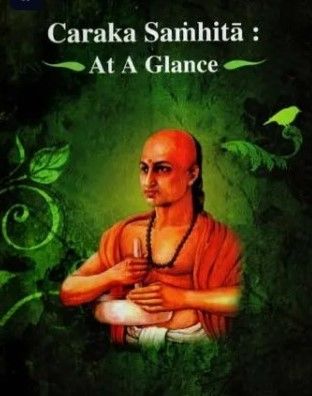Dravaka is an intriguing form of medicine referenced extensively in the classical Ayurvedic text, the Charaka Samhita. This ancient Indian compendium on medicine offers detailed insights into various formulations, among which Dravaka holds a distinct place for its unique preparation involving mineral acids. The methods of creating these mineral acids, their administration, and therapeutic applications portray a sophisticated understanding of medicinal chemistry in ancient Indian medical practice.
Understanding Dravaka in Ayurveda
Dravaka, in the Ayurvedic pharmacological framework, denotes medicinal decoctions or extracts that often incorporate mineral acids. These are not ordinary herbal concoctions but involve complex processes, including calcination, distillation, and purification of minerals and metals, which impart specific curative properties. The Charaka Samhita documents several Dravaka formulations, underscoring their importance in treating a variety of ailments. These preparations represent an early integration of mineral-based chemistry within the ambit of traditional herbal medicine.
The Preparation of Mineral Acids in Dravaka
A key highlight of Dravaka medicine is the meticulous preparation of mineral acids. These acids were obtained through precise procedures involving heating, mixing, and distillation of inorganic substances. The knowledge indicates a highly developed metallurgical and chemical expertise prevalent during the ancient period.
Two notable formulations with mineral acids mentioned in the Charaka Samhita are Svalpa Dravaka and Sankha Dravaka. Both involve specific mineral ingredients in measured quantities, combined and treated through distinctive processes to extract efficacious medicinal acids.
Svalpa Dravaka: Preparation and Uses
Svalpa Dravaka is one of the characteristic acid-form medicines described in the Charaka Samhita. The formulation involves:
· Ingredients: Svarjikakshara (a kind of alkali or salt), rock salt (8 tolas each), nitre (6 tolas), and orpiment (4 tolas).
· Process: These substances are powdered finely, mixed thoroughly, and then rubbed repeatedly with lemon juice. This process of repeated rubbing and drying is critical, likely facilitating a chemical reaction resulting in the formation of a mineral acid extract.
· Dosage and Administration: The resultant acid is administered in drops, with a precise dosage of two drops per application. The acid is taken concomitantly with six grains of long pepper (Piper longum), an important bioenhancer in Ayurveda known to augment the absorption and effectiveness of medicines.
· Therapeutic Application: This medicine is reputed to effectively cure spleen diseases and dyspepsia when used for a week. The spleen, considered an important organ in Ayurvedic pathology, is often linked to detoxification and blood regulation, while dyspepsia refers to digestive disorders.
This meticulous recipe underscores the sophistication with which mineral acids were extracted and utilized medicinally. The use of lemon juice not only acts as a solvent but also ensures the acidic nature necessary for the medicine's efficacy.
Sankha Dravaka: Composition and Methodology
Another notable mineral acid preparation mentioned in the Charaka Samhita is Sankha Dravaka. Its composition is somewhat different and involves:
· Ingredients: Sulphate of iron (32 tolas), alum and rock salt (16 tolas each), and nitre (128 tolas).
· Preparation Process: The powders of the above ingredients are mixed thoroughly and subjected to distillation using a glass retort. The choice of a glass retort is particularly significant, as it denotes a careful avoidance of contamination and preservation of the acid's purity.
· Dosage: The distilled acid is administered in doses of 12 minims. The minims is a unit of volume used in pharmacology, which indicates that precise dosing was emphasized to prevent toxicity or adverse effects.
· Administration Precautions: Significant instructions accompany the use of Sankha Dravaka. The tongue must be anointed with clarified butter (ghee) prior to ingestion. This is likely to protect the mucous membranes from the corrosive effects of the acid. Furthermore, care is advised to prevent the acid from coming in contact with the teeth, highlighting awareness of its erosive potential.
The elaborate preparation and cautious administration guidelines suggest that Sankha Dravaka was a potent medicine, treating serious conditions with due regard for safety.
Pharmacological and Therapeutic Significance
The utilization of mineral acids in Ayurveda, exemplified by Dravaka preparations, reflects an advanced understanding of their therapeutic capacities. Mineral acids possess unique properties that can stimulate digestion, clear obstructions in the channels (srotas), and purify tissues (dhatus), aligning with classical Ayurvedic principles.
The coupling of Dravaka acids with bioactive agents like long pepper illustrates an integrated approach, whereby classical botanicals amplify the efficacy and mitigate the potential side effects of mineral preparations. The specific use of clarified butter as a protective medium also points to a nuanced knowledge of formulation science, balancing potency with tolerability.
Importantly, the formulations aimed to address prevalent ailments such as spleen diseases and dyspepsia, conditions which in Ayurveda are often linked to imbalances in the digestive and circulatory systems. Their inclusion in the Charaka Samhita reinforces their legitimacy and widespread use in the ancient medicinal landscape.
Conclusion
Dravaka, as described in the Charaka Samhita, is a significant branch of Ayurvedic medicine focusing on mineral acid preparations, showcasing precise formulation methods. This meticulous attention to preparation, dosage, and administration underscores a holistic approach to medicine, emphasizing both safety and efficacy. Studying these traditional formulations provides valuable insights for modern pharmacology, particularly in natural product drug discovery and the revitalization of classical medicines. Dravaka, therefore, serves as a testament to the rich medicinal legacy preserved in the Charaka Samhita, highlighting the timeless wisdom of ancient Indian medical traditions.
